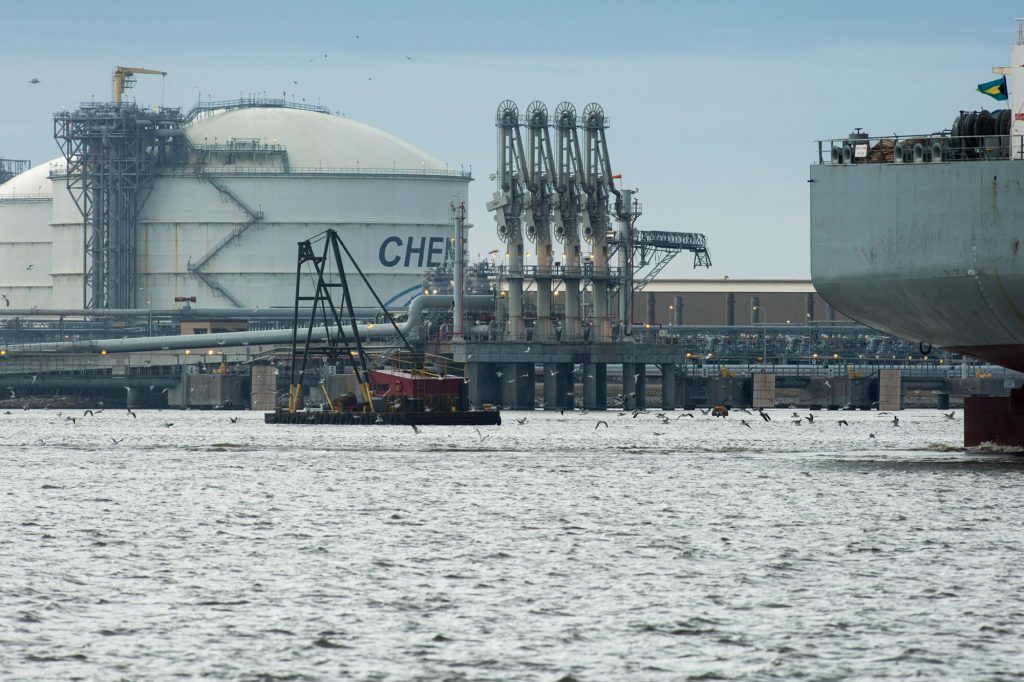
Two weeks after Hurricane Harvey flooded the U.S. Gulf Coast, brought shipping to a halt and knocked out power to millions, the only company sending U.S. shale gas overseas is back in business.
In fact, Cheniere Energy Inc.’s flagship Sabine Pass terminal in Louisiana is liquefying more natural gas for export than ever.
Cheniere fully restored operations at the complex this past weekend. And a few days after that, the company brought in and liquefied a record 3.1 billion cubic feet of gas, said Doug Shanda, senior vice president of operations. With another expansion nearing completion, the Houston-based company expects to extend that record this winter, he said in a phone interview Thursday.
As Harvey drenched the region, Cheniere was acutely aware of its status as the first shale gas export terminal built along the U.S. Gulf Coast. About three dozen like it have been proposed, but for now, it’s alone. So all eyes were on Cheniere during the storm. Citigroup Inc. warned of possible disruptions at the terminal while Genscape Inc. speculated on how long it would remain open. It became a litmus test of sorts — for how resilient America’s gas supplies could be in a global market.
“We are the poster child of the way this is supposed to work out,” said Corey Grindal, Cheniere’s senior vice president of supply.
If it’s any indication of how the terminal fared, it never shut. Sabine Pass kept liquefying gas throughout the storm, even as a major Kinder Morgan Inc. supply line went down, dangerous storm surges halted vessel traffic and tanks began filling up.
The way Grindal sees it, Cheniere had no choice but to keep running. As the country’s largest gas buyer, the company has contracts to bring in massive shipments of gas by pipeline — and contracts to turn the fuel into a liquid for loading onto tankers.
As long as the plant is operating, “I don’t have the right to call up a producer or a supplier and say, ‘I’m not taking your gas,”’ he said.
Fifteen of Cheniere’s traders and other Houston-based employees relocated to an emergency office in Dallas. They rerouted gas through three to four different pipelines to make up for the force majeure that Kinder Morgan had declared. And they needed even more supply when the terminal restarted a liquefaction plant that had been down for maintenance for much of August, Grindal said.
The same day that plant restarted, gauges at the port that measure water levels broke. For four days, Cheniere had to send four tugboats out every few hours to measure the depths on its own and report back to the U.S. Coast Guard. The vast network of energy producers and shippers in nearby Port Arthur, Texas, also depended on those readings, Grindal said.
To be sure, liquefaction at the terminal did slow, said Aaron Stephenson, a plant manager who camped out at the Louisiana terminal with about 40 others during the storm.
By the time the first post-Harvey tanker docked last week, the terminal was “within a few hours” of filling its tanks to the very top, Shanda said. “We produced every drop of LNG that we could produce.”
Now all that gas is being loaded onto tankers. Once two vessels parked at the dock Friday load and leave, Cheniere will have cleared a backlog. One customer missed a scheduled cargo because of the storm. It was loaded onto another ship instead, Shanda said.
The upside to waiting out a hurricane: Cheniere was able to move up some scheduled work on valves, flow transmitters, turbines and compressors — so much so that the terminal won’t need major maintenance for the rest of the year and is set to keep ramping up output.
“We will push the limits,” Shanda said.